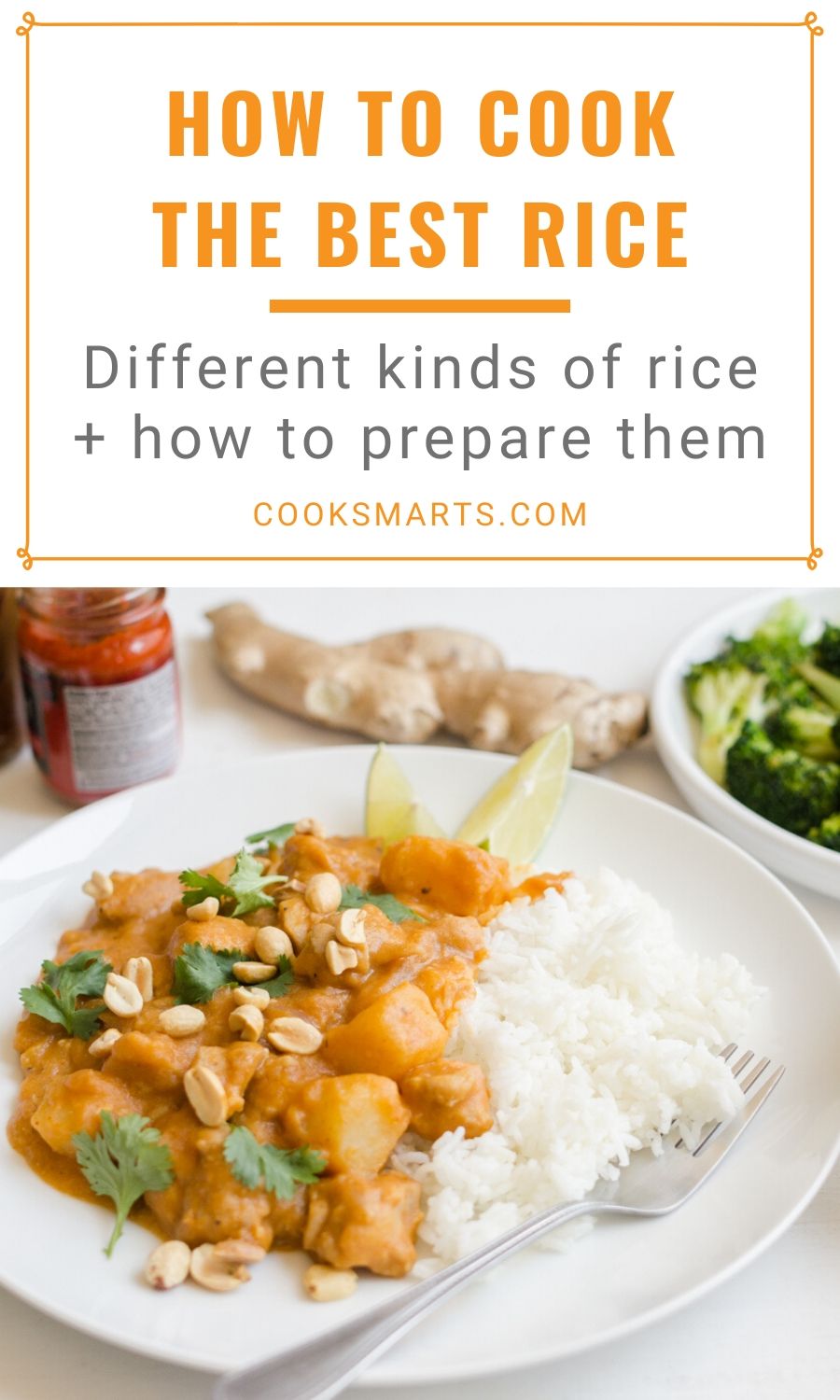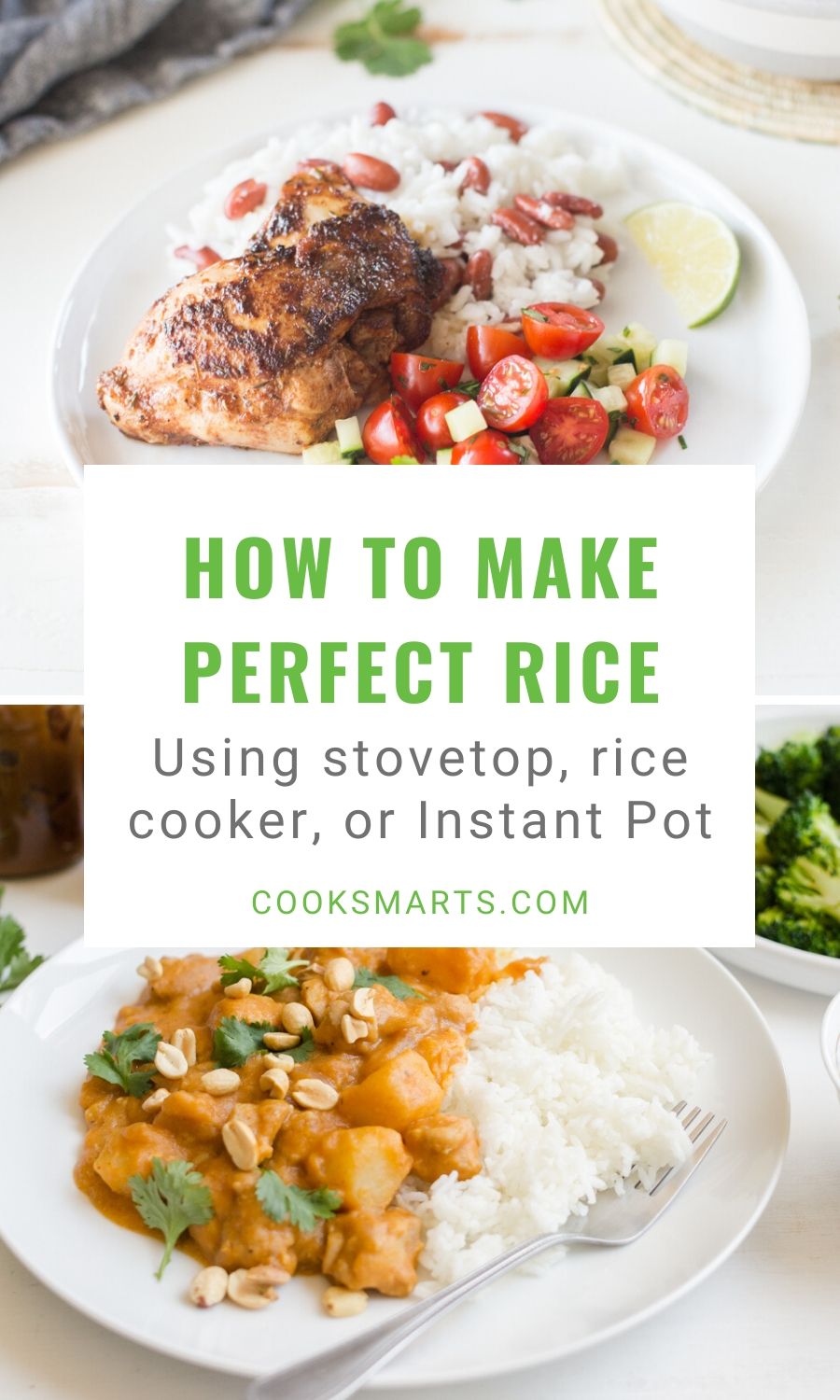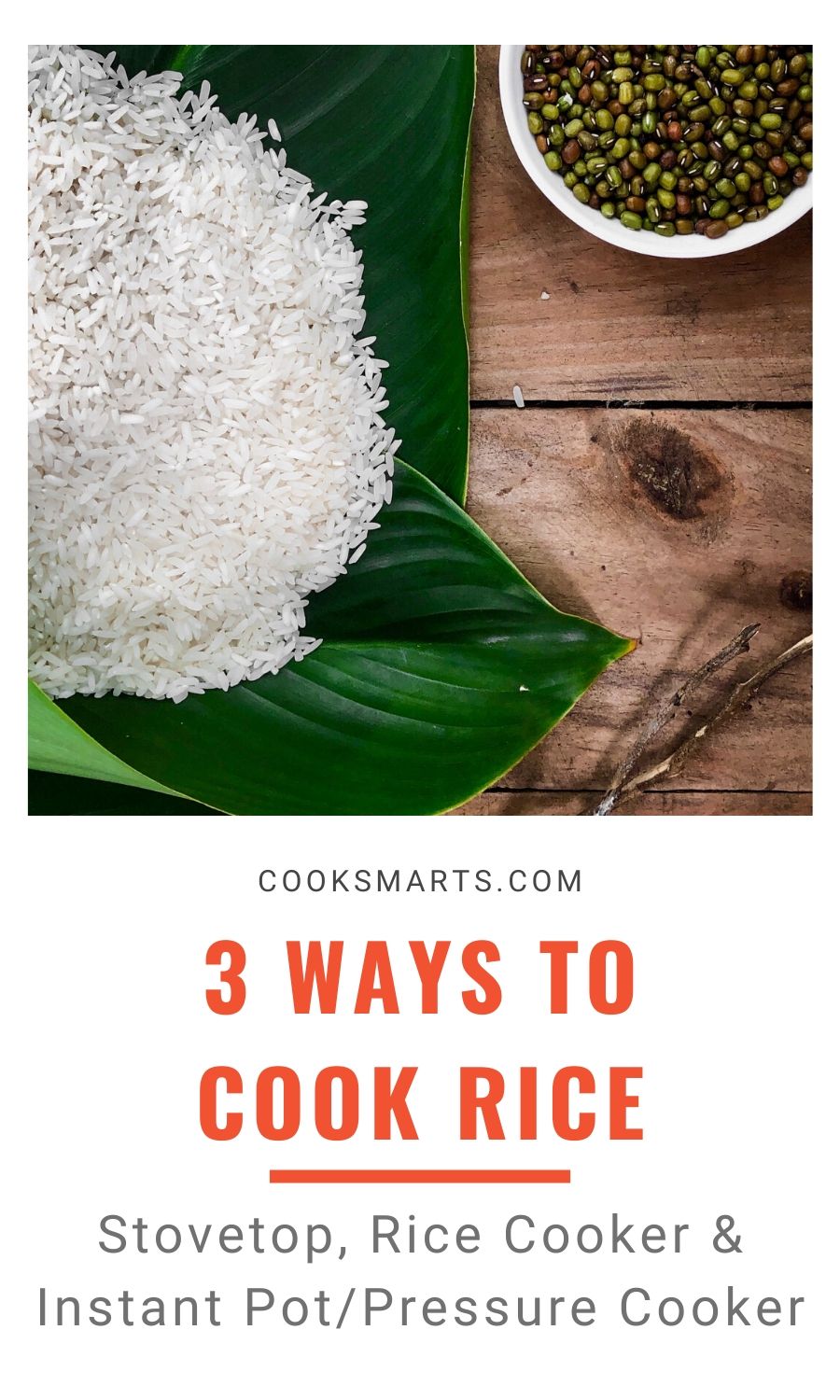How to Cook Rice
Rice: It’s one of the simplest foods out there — so why is it so hard to learn how to cook rice without it coming out either gummy or dry? We’ll tell you the best ways to cook rice so it always comes out well, and offer a few ideas for using rice while we’re at it!
Rice is among the world’s most commonly consumed foods, and it’s easy to understand why: It’s simple to make, cheap, and filling. It can be served as a side, turned into a bed for curries or stir-fries, or incorporated into a main dish.
But as many people quickly discover, it’s all too easy to mess up. Too much water and rice will get gummy. Too little and it’ll stay dry and hard — or worse, burn on the bottom of the pot.
Luckily, with a few tips under your belt, you’ll be able to make restaurant-worthy rice every time, whether you’re on the stovetop, pressure cooking in an Instant Pot, or using a rice cooker.
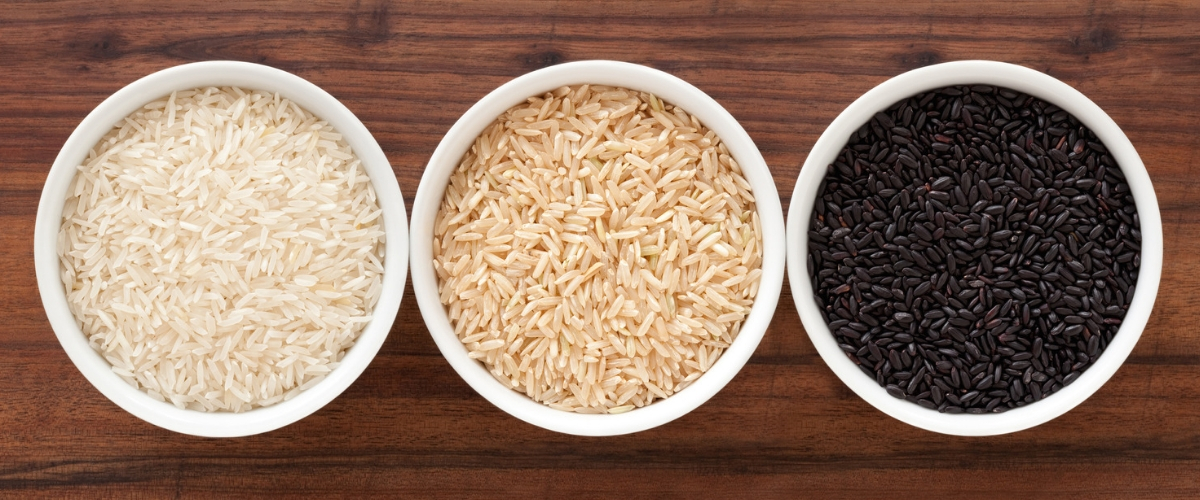
Which rice should you use?
For such a basic food, there are a ton of different types of rice to choose from at the store! Brown, white, wild, jasmine, basmati, sushi rice, long grain, short grain . . . How do you know what to use and when? How do you know when to use jasmine versus basmati rice? What’s the difference between long and short-grain rice, or between white and brown?
White vs. brown rice
First things first: Brown rice and white rice are the same food, but white rice has had the bran and germ removed, leaving only the endosperm. This is similar to the difference between white and whole wheat flour — brown rice is a whole grain, and has a richer, nuttier flavor. It’s a healthier option because it’s higher in fiber, protein, and certain minerals. Some types of rice, such as jasmine, are available in both brown and white varieties; others, such as arborio rice, are less common as brown rice (but can still be found).
Long grain vs. short grain
Long-grain rice and short-grain rice are easy to tell apart by their appearance: Long-grain rice is literally long and thin (think of the rice used in Indian cooking), and short-grain rice is shorter and wider (think of sushi). In a culinary sense, the difference between long and short-grain rice is the amount of starch in the grain. Short-grain rice contains more starch, which results in a soft, sticky rice once cooked — perfect for risotto, sushi, rice pudding, and paella. Long-grain rice cooks up drier, and the grains don’t stick together as much, which makes it ideal for stir-fries, pilafs, salads, or just a side of rice.
Types of rice
There are LOTS of types of rice in this world, but a few of them are more likely to be found at your local grocery store than others. Here are some of the types you’ll probably come across:
- Basmati: This long-grain rice is what you’ll use in Indian dishes because it’s perfect when topped with curries or stews. It’s also great in stir-fries.
- Jasmine: Fragrant and mild, this long-grain rice is popular in Thai meals and is slightly stickier than most long-grain rice.
- Arborio: This short-grain Italian rice is both firm and creamy, so it’s ideal in dishes like risotto or rice pudding.
- Sushi rice: This short-grain rice holds together well when cooked, so it’s most often used in sushi (shocker, right?!).
- Sticky rice (sometimes called glutinous rice): This rice is very sticky when cooked, and is most often used in Eastern or Southeast Asian breakfast or sweet dishes, such as the popular sticky rice with mango.
- Wild rice: We’re including wild rice here even though it’s technically not rice! Believe it or not, it’s actually a type of grass seed. When cooked, the long, thin black grains are chewy and nutty, and can be used in pilafs, eaten as a side, or mixed in with other types of rice.
- Black rice: Also known as forbidden rice, this short-grained rice cooks up to a beautiful, rich purple color. It has a nutty flavor and soft texture.
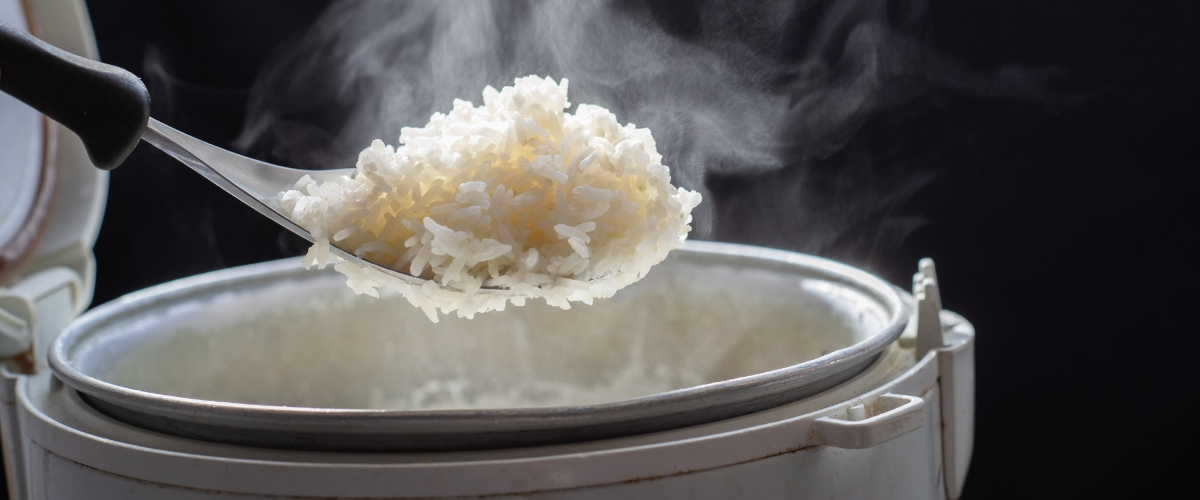
How to cook rice
Regardless of the variety you choose, start by rinsing white rice until the water runs clear to remove some of the surface starches; the easiest way to do this is to swish the rice around with water in a bowl, then drain it through a sieve. You’ll probably need to repeat the process a few times before it’s ready. Brown rice does not need to be rinsed, but if you choose to do so, reduce the amount of cooking water by about three tablespoons per cup.
Any leftover rice should be cooled quickly and stored in the fridge within one hour of cooking.
Stovetop
Check your package for ratios of rice to water because the type of rice does make a difference, but typically you’ll add 1 part white rice to 1½ parts liquid (water or stock) if you’re cooking on stovetop, or for brown rice you’ll use 1 part rice to 2 parts water. Add some salt and a teaspoon or so of butter or oil, if you wish.
Let your rice come to a boil, then quickly cover it and reduce the heat to low. Cook for 15 to 18 minutes for white rice and anywhere from 30 to 45 minutes for brown (again, consult your package), then turn off the heat and let it rest for 5 to 10 minutes before removing the lid and fluffing it with a fork. Resist the urge to check on the rice midway through the cook time — releasing that steam will affect your rice-to-water ratio and impact how your rice cooks. If you know you want softer rice, use a little more water and cook the rice a little longer; for chewier rice, use slightly less water and choose a cook time on the lower end of the range.
Instant Pot
Instant Pot cooking uses significantly less water than stovetop cooking because so much steam escapes when you’re cooking on the stovetop. For that reason, we recommend a ratio of 1 cup rice to 1 cup water for white rice and 1 cup rice to 1¼ cups water for brown. We like to add salt and roughly a teaspoon of butter or oil before cooking.
Put on the lid of your Instant Pot and turn the knob to the sealing position. For white rice, cook on high pressure for just three minutes, then let the Instant Pot do a natural release for an additional 10 minutes. For brown rice, cook at high pressure for 15 minutes, then do a five-minute natural release. At the end of the natural release, release any additional pressure, open the lid, and fluff the rice with a fork.
For more info on cooking grains in the Instant Pot, get our Instant Pot Cheat Sheet (+ Recipe Converter & bonus IP recipes) for $9.99!
Rice cooker
Rice cookers are handy little gadgets that monitor rice as it’s cooking and automatically switch to a “keep-warm” setting as soon as the rice is done. They work by measuring the temperature inside the cooker, and switching off when it rises above 212 degrees Fahrenheit, the boiling point of water, which is an indication that all the water has been absorbed into the rice.
Most rice cookers use the ratio of 1 cup rinsed white rice to 1 cup water, but some require up to 2 parts water. For brown rice, the ratio is 1 cup brown rice to 1½ cups water, or up to 2½ cups water. Check your rice cooker manual for more info about the specifics of your device. Press the “on” button, and let the rice cook until it switches to “keep warm.” For best results, let it sit for an additional 10 minutes before eating.
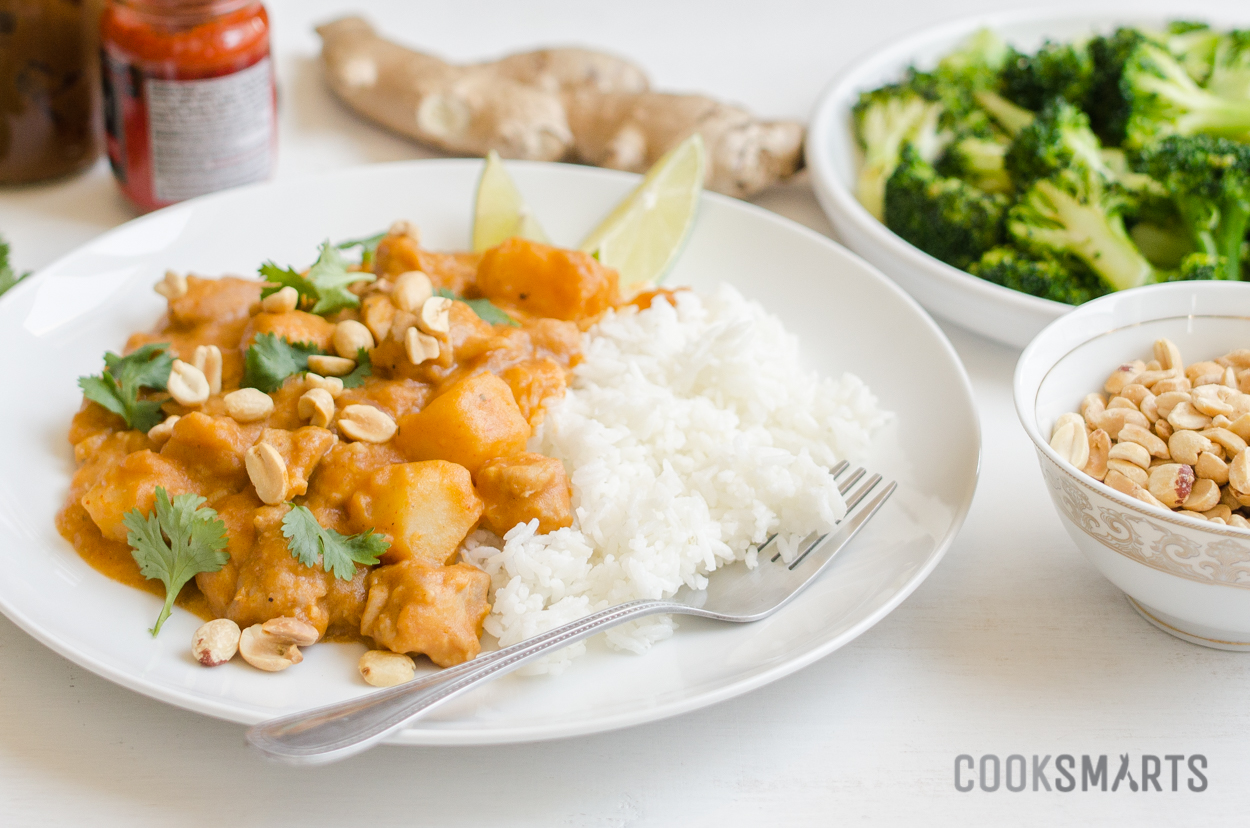
Serving suggestions:
Some of our favorite rice dishes include:
- Egg Roll in a Bowl, which uses a simple bed of rice beneath sweet and savory Thai flavors, including a homemade Thai chili sauce.
- Jerk Chicken Thighs with coconut rice and beans, where the rice is cooked with additional flavors and mixed with kidney beans for a decadent, savory side dish.
- Massaman Chicken Curry, in which the rice soaks up rich flavors including coconut, ginger, garlic, and curry paste.
- Halibut with Miso Butter, a flavorful, simple combo of rice + fish + veggies. The miso butter is heavenly when mixed into rice!
- Shrimp Fried Rice with stir-fried ginger cabbage, a great way to use up leftover rice, which gets its flavors from bacon, soy sauce, and chili garlic sauce.
Get more helpful cooking tips and resources by signing up for our newsletter below. We send out weekly emails that will help you improve in the kitchen and live a healthier life, so join our community today and start cooking smarter!
